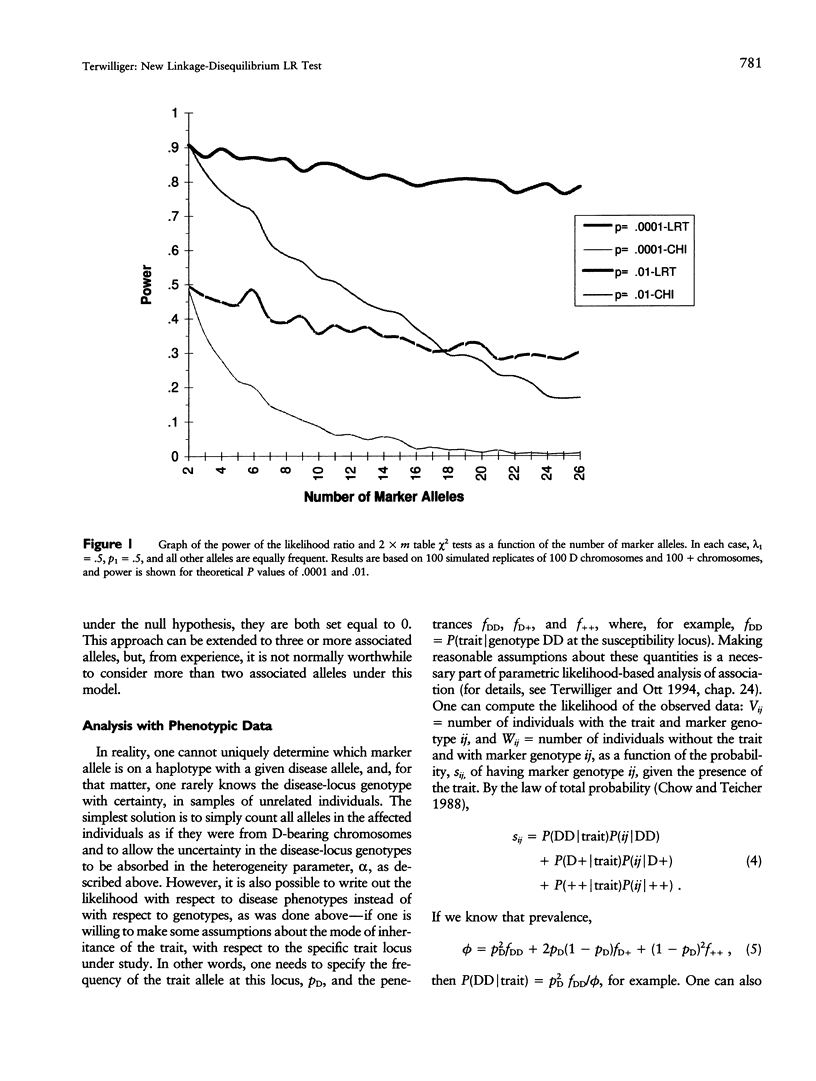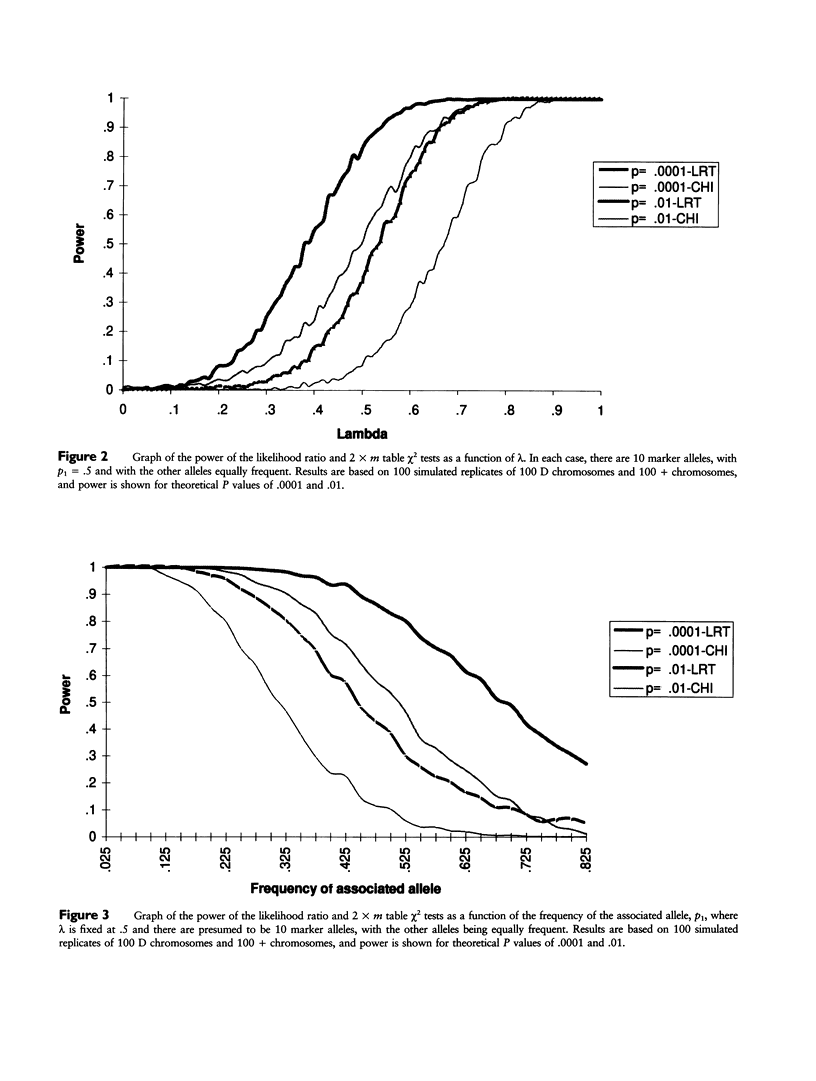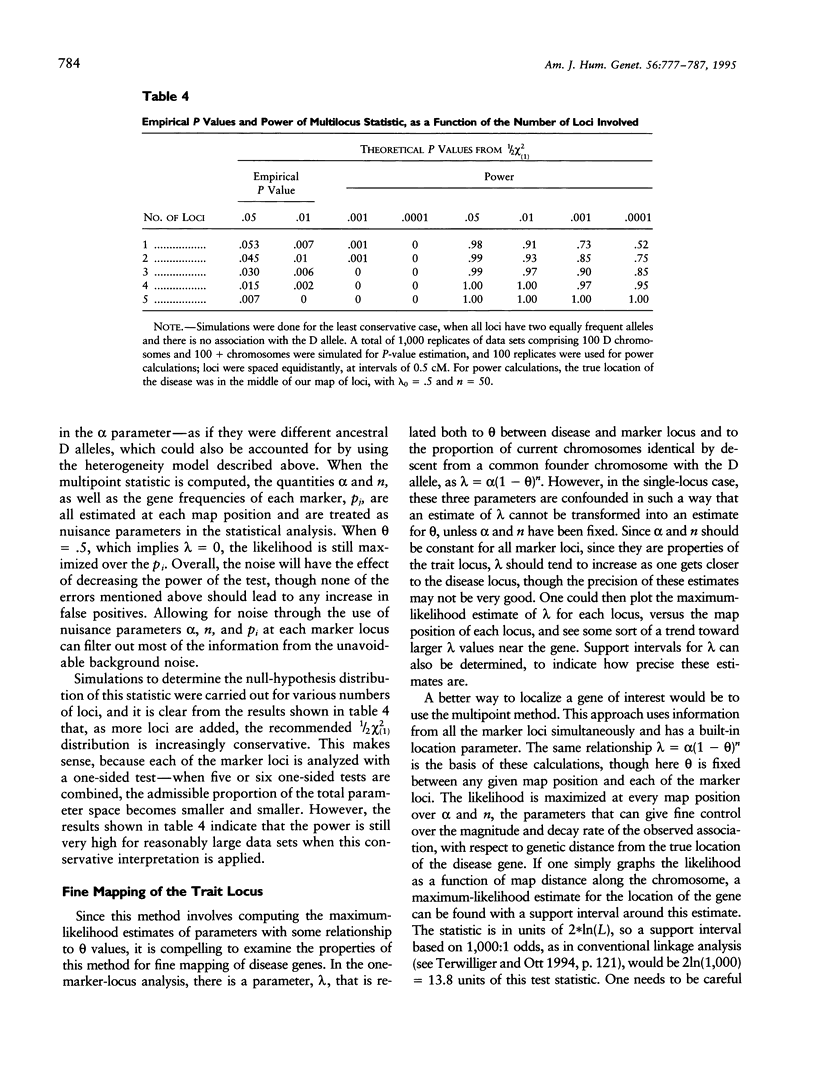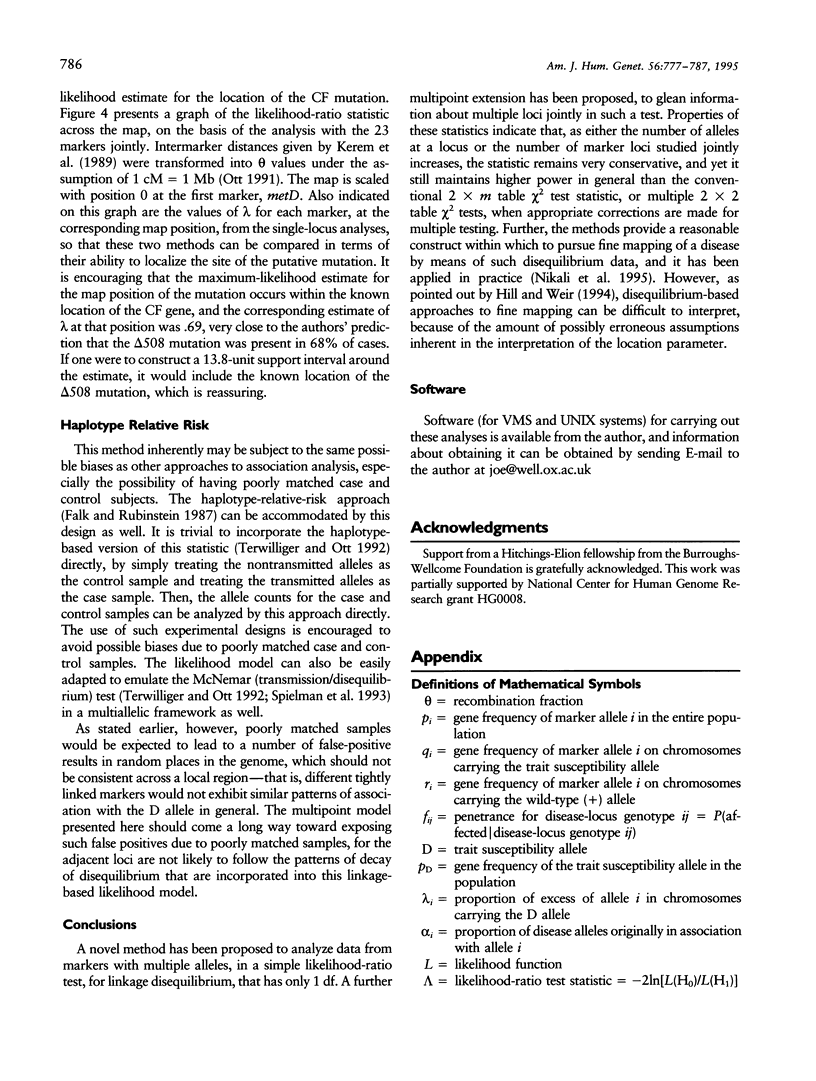Abstract
Historically, most methods for detecting linkage disequilibrium were designed for use with diallelic marker loci, for which the analysis is straightforward. With the advent of polymorphic markers with many alleles, the normal approach to their analysis has been either to extend the methodology for two-allele systems (leading to an increase in df and to a corresponding loss of power) or to select the allele believed to be associated and then collapse the other alleles, reducing, in a biased way, the locus to a diallelic system. I propose a likelihood-based approach to testing for linkage disequilibrium, an approach that becomes more conservative as the number of alleles increases, and as the number of markers considered jointly increases in a multipoint test for linkage disequilibrium, while maintaining high power. Properties of this method for detecting associations and fine mapping the location of disease traits are investigated. It is found to be, in general, more powerful than conventional methods, and it provides a tractable framework for the fine mapping of new disease loci. Application to the cystic fibrosis data of Kerem et al, is included to illustrate the method.
Full text
PDF










Selected References
These references are in PubMed. This may not be the complete list of references from this article.
- Chotai J. On the lod score method in linkage analysis. Ann Hum Genet. 1984 Oct;48(Pt 4):359–378. doi: 10.1111/j.1469-1809.1984.tb00849.x. [DOI] [PubMed] [Google Scholar]
- Falk C. T., Rubinstein P. Haplotype relative risks: an easy reliable way to construct a proper control sample for risk calculations. Ann Hum Genet. 1987 Jul;51(Pt 3):227–233. doi: 10.1111/j.1469-1809.1987.tb00875.x. [DOI] [PubMed] [Google Scholar]
- Hill W. G., Weir B. S. Maximum-likelihood estimation of gene location by linkage disequilibrium. Am J Hum Genet. 1994 Apr;54(4):705–714. [PMC free article] [PubMed] [Google Scholar]
- Hästbacka J., de la Chapelle A., Kaitila I., Sistonen P., Weaver A., Lander E. Linkage disequilibrium mapping in isolated founder populations: diastrophic dysplasia in Finland. Nat Genet. 1992 Nov;2(3):204–211. doi: 10.1038/ng1192-204. [DOI] [PubMed] [Google Scholar]
- Kerem B., Rommens J. M., Buchanan J. A., Markiewicz D., Cox T. K., Chakravarti A., Buchwald M., Tsui L. C. Identification of the cystic fibrosis gene: genetic analysis. Science. 1989 Sep 8;245(4922):1073–1080. doi: 10.1126/science.2570460. [DOI] [PubMed] [Google Scholar]
- Terwilliger J. D., Ott J. A haplotype-based 'haplotype relative risk' approach to detecting allelic associations. Hum Hered. 1992;42(6):337–346. doi: 10.1159/000154096. [DOI] [PubMed] [Google Scholar]


